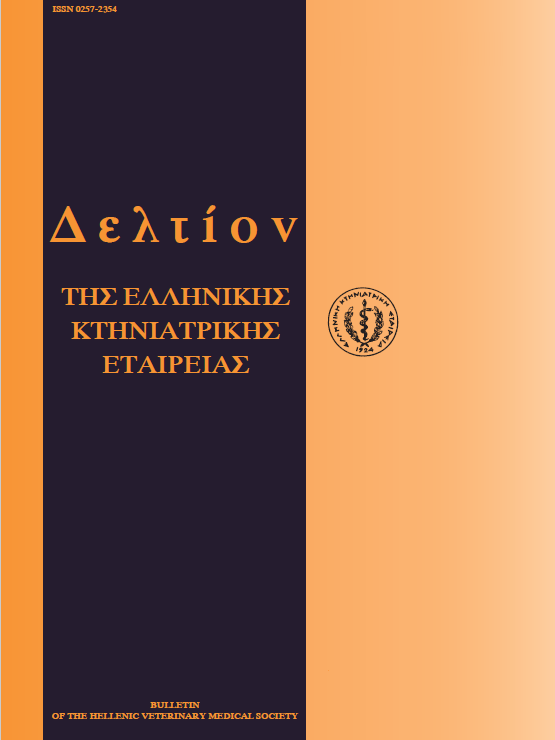Microbiological, histological, technological, and toxicological preliminary study of dog's canned food
Аннотация
During this study canned food for dogs of six firms were investigated (42 samples totally). Microbiologically the following parameters were checked: the commercial sterility, the water activity (aw), the pH, the presence of aerobic and anaerobic bacteria after incubation of tins in 25 ° C for 28 days, 32 ° C for 21 days and 55 ' C for 8 days. Histologically, the existence of different kinds of tissues was examined. Technologically Weende's analysis and separation of the tin's content were made. Toxicologically, the concentration of lead and cadmium were countered. The results showed that dog's canned food, in Greece, are supersterillised. Muscular, adipose and connective tissue are used for their production as well as byproducts and soya proteins by some firms. The results of Weende's analysis are in full agreement with the amount of nutriments that they were written on tins' labels.
Article Details
- Как цитировать
-
RANTOS (Σ. ΡΑΝΤΟΣ) S., PANTOULAS (Λ. ΠΑΝΤΟΥΛΑΣ) L., SARAKATSIANOS (Ι. ΣΑΡΑΚΑΤΣΙΑΝΟΣ) I., ROZOS (Γ. ΡΟΖΟΣ) G., & PAPAIOANNOU (Ν. ΠAΠΑΪΩΑNNOΥ) N. (2018). Microbiological, histological, technological, and toxicological preliminary study of dog’s canned food. Journal of the Hellenic Veterinary Medical Society, 49(2), 110–114. https://doi.org/10.12681/jhvms.15756
- Выпуск
- Том 49 № 2 (1998)
- Раздел
- Research Articles

Это произведение доступно по лицензии Creative Commons «Attribution-NonCommercial» («Атрибуция — Некоммерческое использование») 4.0 Всемирная.
Authors who publish with this journal agree to the following terms:
· Authors retain copyright and grant the journal right of first publication with the work simultaneously licensed under a Creative Commons Attribution Non-Commercial License that allows others to share the work with an acknowledgement of the work's authorship and initial publication in this journal.
· Authors are able to enter into separate, additional contractual arrangements for the non-exclusive distribution of the journal's published version of the work (e.g. post it to an institutional repository or publish it in a book), with an acknowledgement of its initial publication in this journal.
· Authors are permitted and encouraged to post their work online (preferably in institutional repositories or on their website) prior to and during the submission process, as it can lead to productive exchanges, as well as earlier and greater citation of published work.




